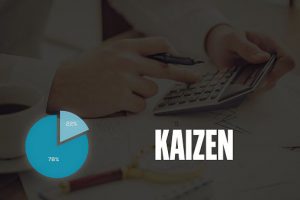In 2015, American Rheinmetall Systems (ARS) faced a challenge. The German-owned engineering company needed to streamline operations to give employees more time to take on additional defense contracts.
The businesses’ parent company, Rheinmetall Defence, also wanted ARS to move from a workshop for system integration, assembly and research and development to a standalone business.
To meet these challenges and accomplish business goals, ARS turned to Lean methodologies. They have experienced a great deal of success in the two years since. Two key components of that success were leveraging the right Lean tools and educating the entire workforce in both their purpose and use.
Improving Outcomes
ARS does assembly and testing of electro-optics and fire control systems at a plant in Biddeford, Maine. The work requires hands-on effort from employees that can, without the proper methods in place, lead to inefficiencies.
In a way, the company became a victim of its own success. With products originally designed in Norway, the company did not expect to sell its equipment in large numbers. However, it eventually received a defense-related order for 15,000 parts.
The company did not have the resources to efficiently handle that large quantity. To do so, they took a path commonly taken in such situations, building huge batches, sharing tools and carrying a lot of inventory.
Eventually, the company turned to the Greater Boston Manufacturing Partnership (GBMP) for consulting on implementing process improvements to take on larger projects. The willingness of ARS leadership to embrace change and Lean methods provided the first – and perhaps most important – key to eventual success.
Another was commitment to educating the workforce on Lean methodologies.
“ARS is serious about thinking differently,” Bruce McGill, a continuous improvement manager for GBMP, told Advanced Manufacturing. McGill said ARS CEO Brad Hittle “recognizes that Lean manufacturing is good for employees and for customers.
“He understands that sustainable change must come from their people, by allowing them to quickly apply what is learned through education and training to their own processes,” he added.
Lean Tools
ARS used a handful of Lean tools to accomplish their goals. A key was getting complete executive buy-in and training for all employees at every company work center. Within two years of applying Lean, every employee had gone through training and each had participated in at least one Lean process improvement project.
The tools used include the following:
Kaizen – The strategy of making small changes that, over time, can lead to big results.
Spaghetti Charts – Workflow diagrams that provide a way to identify every step in an individual process and how people, materials and information flow through the process. It helps to identify waste and areas that need improvement.
Value Stream Mapping – Another system for mapping out the details of a process that focuses on finding eight forms of waste: defects, over-production, waiting, non-utilized talent, transportation, inventory, motion and extra processing.
Non-value adding – A method for identifying efforts that do not add value. To add value, a process step must do three things. First, it must change the form and function of a product or service. Second, the customer must be willing to pay for the change. Third, the process step must be done correctly the first time.
ARS Achievements
Putting these Lean tools into play, ARS was able to achieve many goals that improved its operations. They include:
- Reduced space – ARS now does the same amount of work in 9,000 square feet as it used to do in 20,000 square feet.
- Reduced process steps – In one case, a process that once had 72 steps now has just 31.
- Time reductions – In one example, employees used to handle one small piece of the camera-building process. They were cross-trained to handle all aspects of assembly. Now every employee can build a camera from start to finish. The change reduced assembly time by 40%.
- Small steps – With a directive from executives that not everything had to be perfect, one group of workers worked together to find small process improvements. These changes, tested without spending thousands of dollars, eventually led to even more improvements on the factory floor.
ARS provides a textbook example of how to implement Lean methodologies. The full-fledged support from management, coupled with training and the resulting buy-in from employees, have led to the type of sustainable improvements all businesses hope to achieve.
